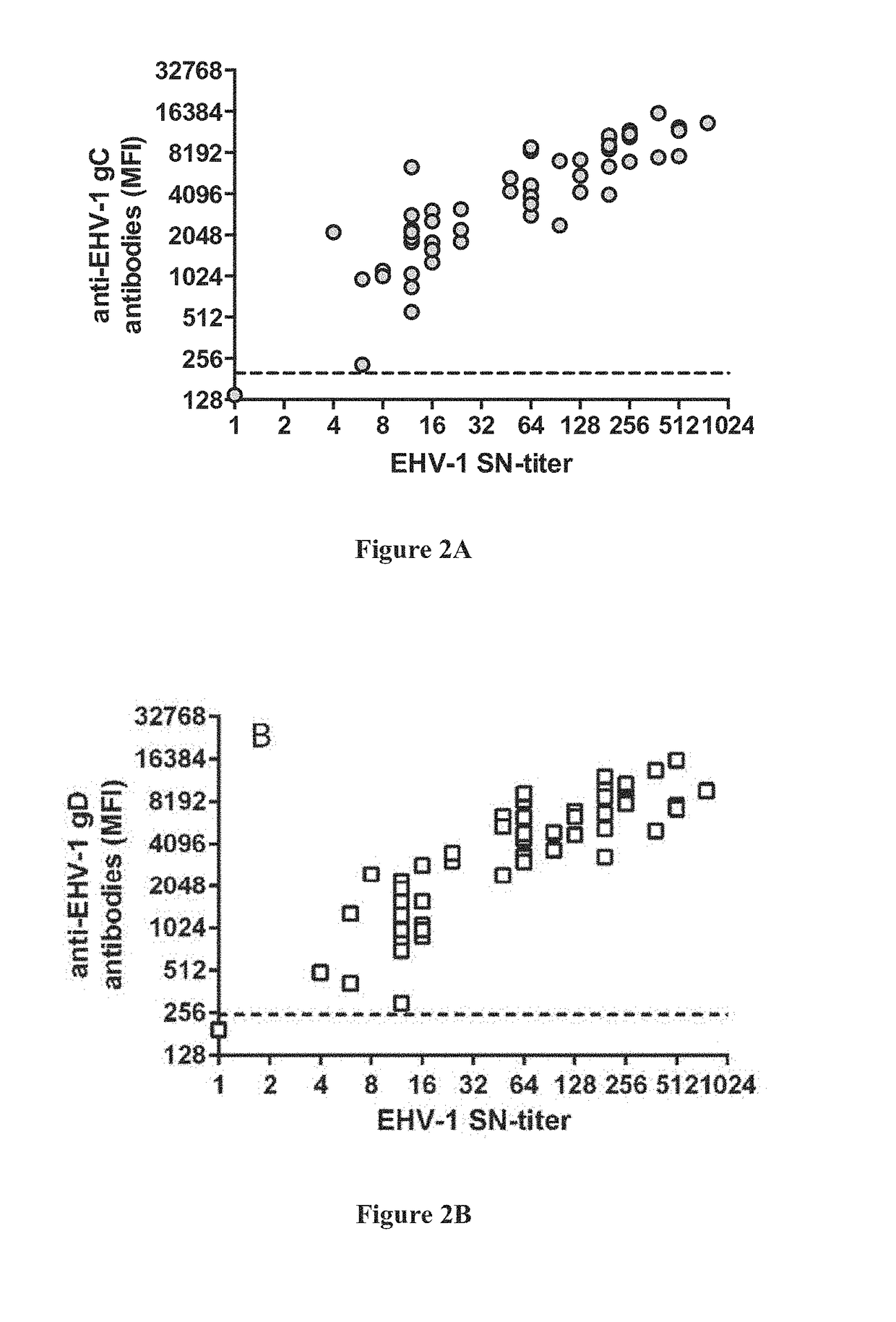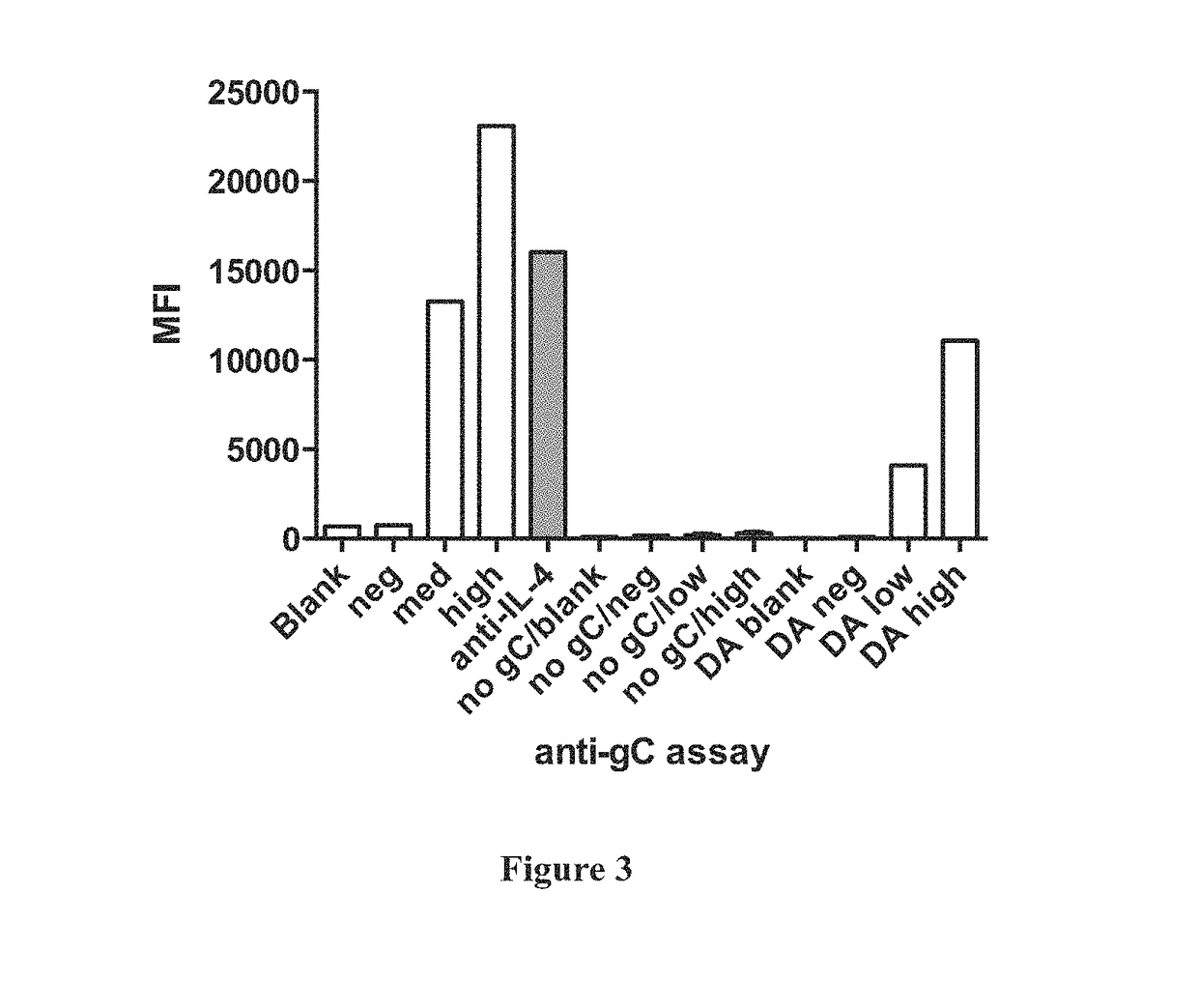Enhancing serological assays via fusion proteins
a technology of serological assays and fusion proteins, applied in the field of enhancing serological assays via fusion proteins, can solve the problem that the sn test does not allow multiplexing of antigens, and achieve the effects of improving signal and dynamic/linear range, facilitating multiplication, and improving quantification
- Summary
- Abstract
- Description
- Claims
- Application Information
AI Technical Summary
Benefits of technology
Problems solved by technology
Method used
Image
Examples
example 1
Multiplex ACYF System with Serum Neuralization (SN) for the Detection of Equine Herpesvirus Type 1 (EHV-1) in Serum Samples
[0060]Of all viral infections in horses, Equine herpesvirus 1 (EHV-1) is among the most costly because of the abortions, neonatal mortality, respiratory and neurological diseases it causes in horses. Infected animals develop antibodies against several antigens of the virus including the envelop glycoproteins gC and gD. Detecting these antibodies can reflect disease stage and help determine the course of treatment and quarantine of the sick animal.
[0061]Conventional Serum Neutralization (SN) test is the gold standard for measuring anti-EHV antibody titers in serum samples from infected horses. However, SN tests are very time-consuming and cumbersome to perform. In this example, the assay of this invention (the ACYF system) was compared to a conventional SN test. This was done using the example of an IL-4 ACYF system in a bead-based multiplex assay for the detecti...
PUM
| Property | Measurement | Unit |
|---|---|---|
| angle | aaaaa | aaaaa |
| color | aaaaa | aaaaa |
| colors | aaaaa | aaaaa |
Abstract
Description
Claims
Application Information
 Login to View More
Login to View More - R&D
- Intellectual Property
- Life Sciences
- Materials
- Tech Scout
- Unparalleled Data Quality
- Higher Quality Content
- 60% Fewer Hallucinations
Browse by: Latest US Patents, China's latest patents, Technical Efficacy Thesaurus, Application Domain, Technology Topic, Popular Technical Reports.
© 2025 PatSnap. All rights reserved.Legal|Privacy policy|Modern Slavery Act Transparency Statement|Sitemap|About US| Contact US: help@patsnap.com



